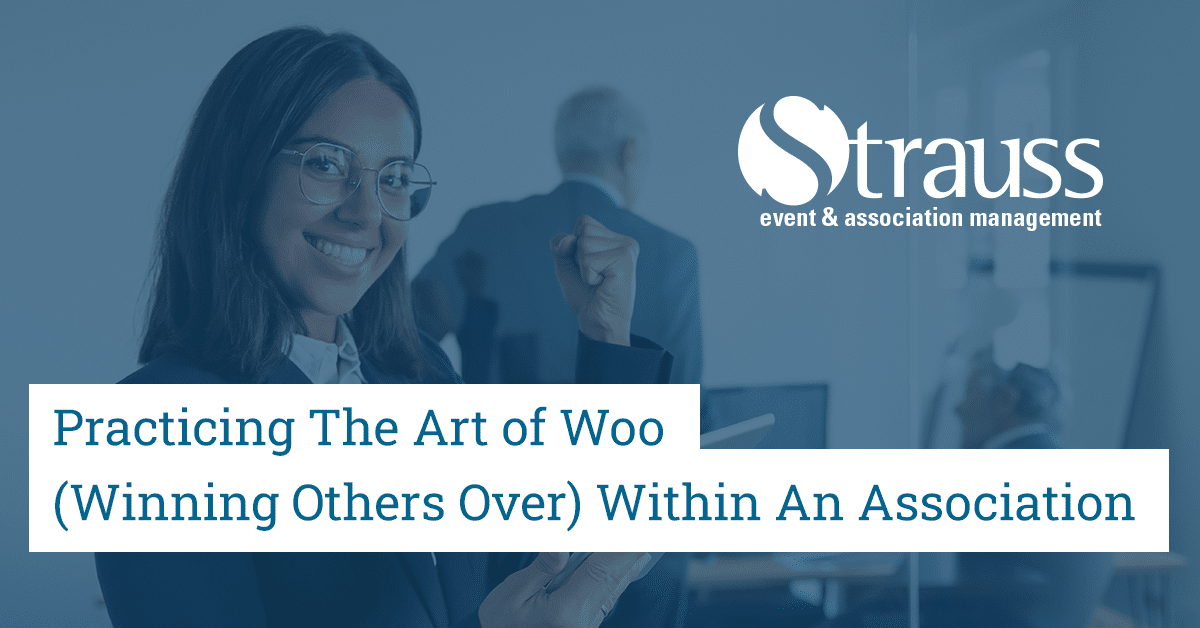Difficult people are everywhere. Despite one’s best efforts some people are never pleased. But when they are exhibitors at an association event or tradeshow how can they be transitioned from difficult to champion? Practicing the art of WOO or Winning Others Over can help move difficult exhibitors to enthusiastic supporters of the association.
Provide Information Early
Engage exhibitors by sending them information about the association event as early in the planning process as possible. Information is power. Put yourself in their shoes. Information may lead to solid questions from exhibitors helping to identify gaps in the planning process long before the association event or tradeshow occurs.
Make sure information is clear from the start. Let exhibitors know exactly what information is needed and when by setting deadlines and sending out reminder emails. Communicate any changes to the schedule or anything that may impact the exhibitors as soon as possible. Maintain communication with email updates making it easier for exhibitors to ask questions and for staff to provide timely responses, to avoid any misunderstandings. Use an FAQs page on the association’s tradeshow or event website to deal with the most frequently asked questions.
An Exhibitor Manual will help prepare exhibitors by sharing key information and guidelines. It should include everything such as health and safety information, contact details, directions to the venue and more. Make it available as a PDF to email members and post to post to the website.
Listen to Exhibitors and Members
Whether it is a long-winded phone call, or a passive aggressive email difficult people usually just want to be heard. Greek Philosopher Epictetus said, “we have two ears and one mouth so that we can listen twice as much as we speak.” Invest time by listening. Most people don’t need to be right… they want to be heard.
When responding be authentic and keep a level-head. Offer empathy… “I hear you…” Give enough information to inform as to why things are the way they are within the association. Offer an alternative idea or perspective. Own any mistakes, apologize, then move on. Most importantly, be human… everyone is just doing their job and the main goal is to achieve a successful event for the association and its members.
Onsite
On the day of the association event or trade show be available to exhibitors offering them hospitality and support. Invest time by walking the tradeshow floor regularly and connecting with each exhibitor. Make a point of speaking with even the toughest exhibitors. Use this time to build relationships, to learn exhibitor’s names, and really get to know them. Show interest and respect for that individual. Ask how everything is going. Pause to listen to their responses. Mine for nuggets of information that can take the tradeshow from good to great.
Some of these ideas are easily implemented immediately while others will need to wait for future association tradeshows. Either way, this practice shows all members in the association, each member is valued, recognized for their contributions and individuality. This can make a difference in how that person feels about the association and its leaders.
Remember relationships are the latest collateral. Exhibitors are not likely to return to future shows if they feel a lack of support or connection. You can retain exhibitors for future tradeshows by having a healthy, supportive, empathetic, and highly communicative environment.
Evaluate Your Association Event or Tradeshow
Debrief and evaluation are a critical step in improving your association events and tradeshows.
Debrief following an association event or tradeshow with volunteers, staff, planning team members, exhibitors, and attendees. Create an opportunity for honest feedback to improve the association event or tradeshow in the future.
Evaluate every component of the association event or tradeshow. Ask for feedback through evaluation surveys. Include attendees, exhibitors, sponsors, speakers, volunteers, and the planning team in all post-event activities. Clear, objectified data will allow for better planning, better decision-making, and the ability to evaluate better.
Listen to the evaluation facts. What’s the feedback and common theme? What to do differently next year? What were the key learnings? Commit to incorporating changes heard throughout the debrief and evaluation process. Imagine the response when kicking off the next association trade show or event with, “We heard you say (on the last evaluation) so we are (making the following change).”
Conclusion
Practicing the art of WOO or Winning Others Over takes time and patience. Learning to influence without manipulation will certainly make the next association tradeshow or event more fun and less stressful. Using relationship-based, emotional intelligence to secure buy-in is an opportunity to resolve issues with care and build trust as a savvy and proven association professional.
Read more articles from Michelle A. Penner:
Hiring Interns: How it Benefits an Association
The Winning Recipe for Successful Association Events

